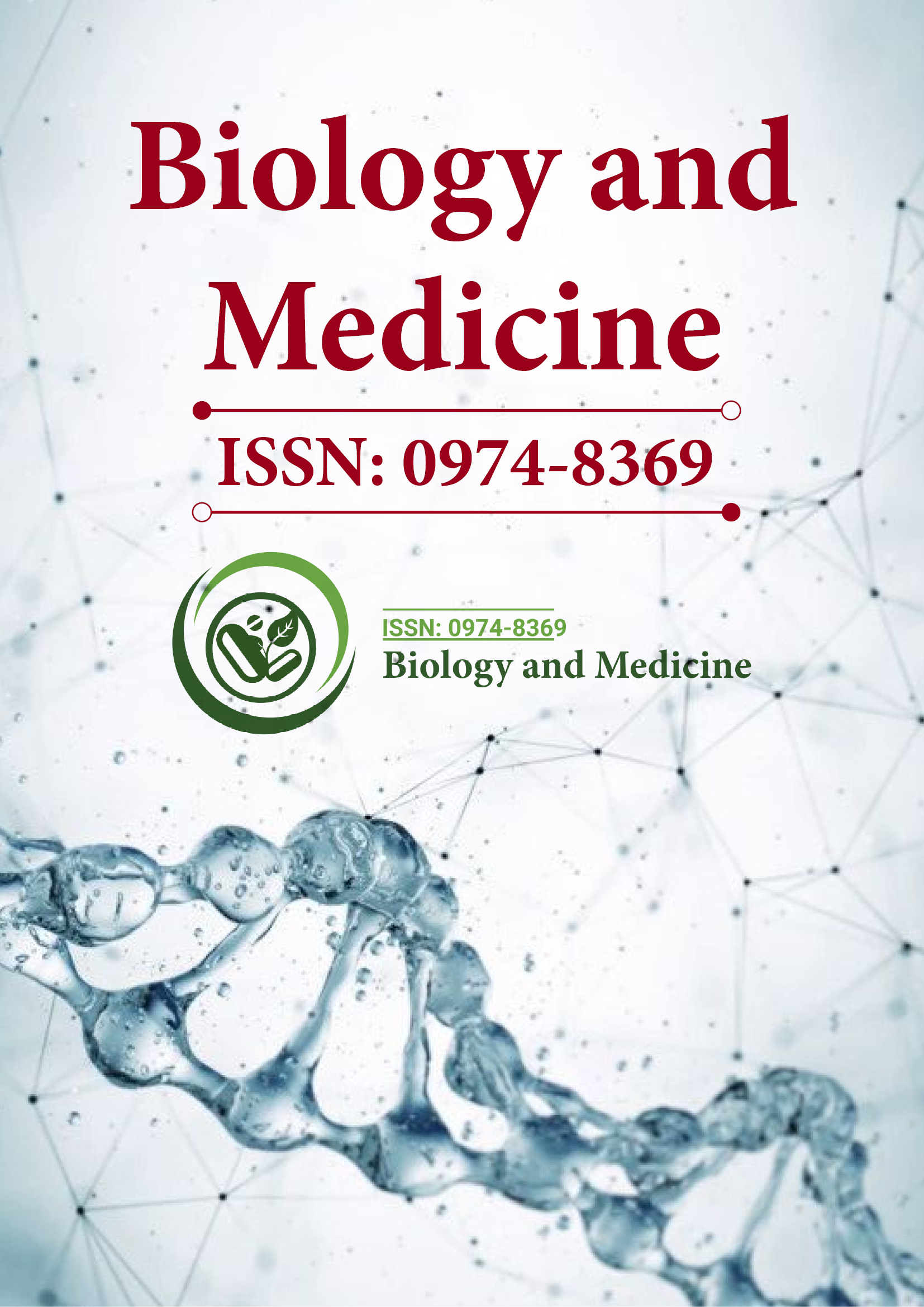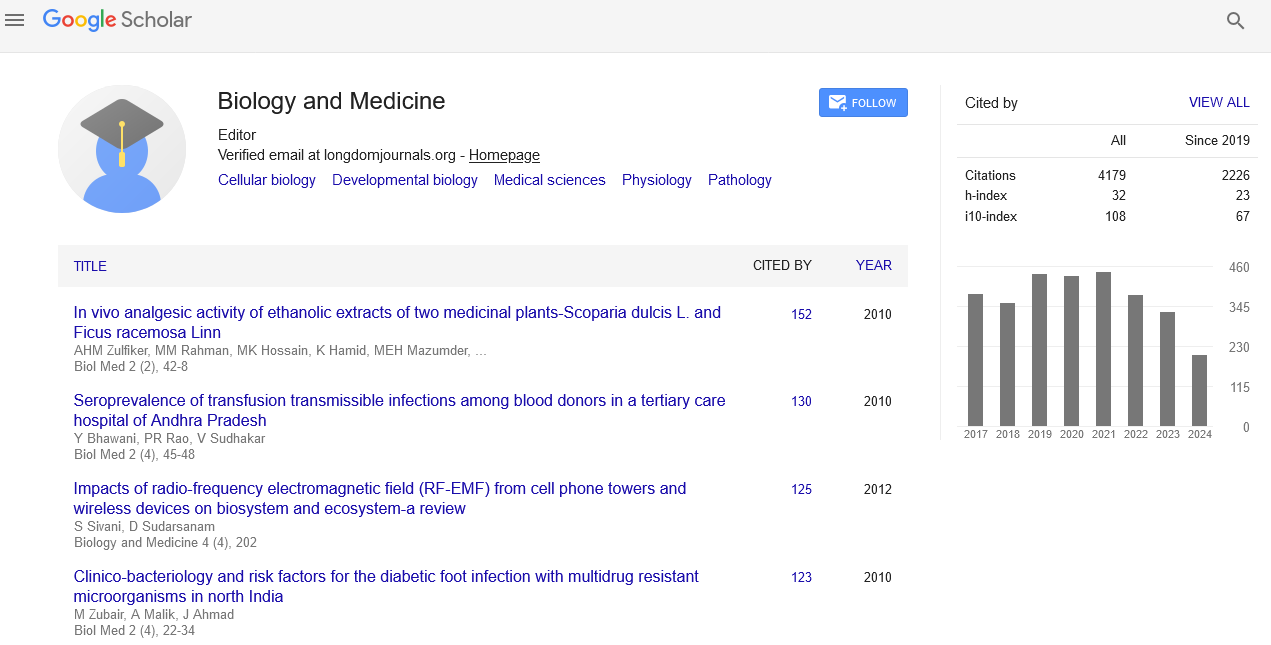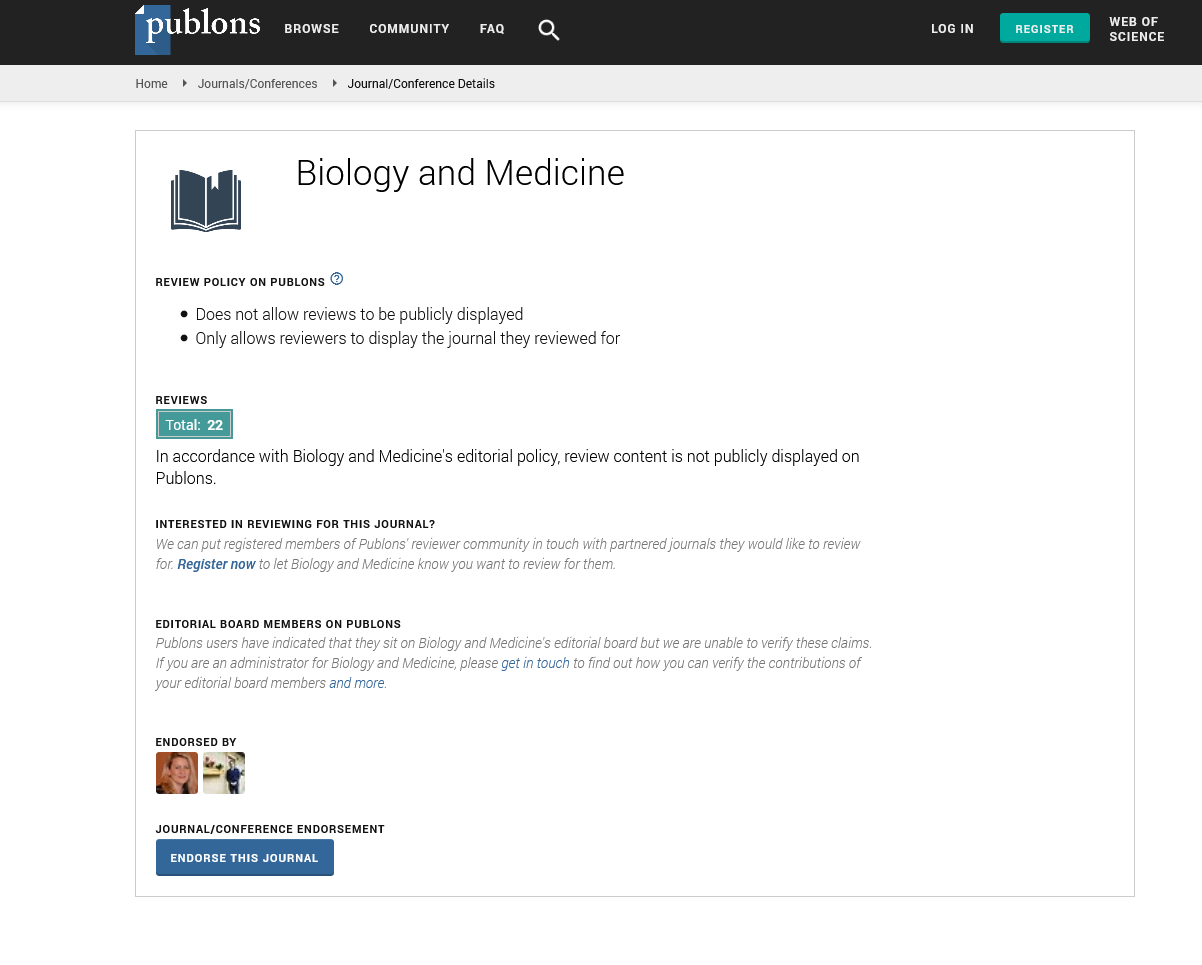Indexed In
- Open J Gate
- Genamics JournalSeek
- CiteFactor
- Cosmos IF
- Scimago
- Ulrich's Periodicals Directory
- Electronic Journals Library
- RefSeek
- Hamdard University
- EBSCO A-Z
- Directory of Abstract Indexing for Journals
- OCLC- WorldCat
- Proquest Summons
- Scholarsteer
- ROAD
- Virtual Library of Biology (vifabio)
- Publons
- Geneva Foundation for Medical Education and Research
- Google Scholar
Useful Links
Share This Page
Journal Flyer

Open Access Journals
- Agri and Aquaculture
- Biochemistry
- Bioinformatics & Systems Biology
- Business & Management
- Chemistry
- Clinical Sciences
- Engineering
- Food & Nutrition
- General Science
- Genetics & Molecular Biology
- Immunology & Microbiology
- Medical Sciences
- Neuroscience & Psychology
- Nursing & Health Care
- Pharmaceutical Sciences
Editorial - (2021) Volume 13, Issue 6
Biological Molecules and Morphogenesis
Jun-Ping Liu*Received: 11-Jun-2021 Published: 21-Jun-2021, DOI: 10.35248/0974-8369.21.13.e124
A biomolecule or organic particle could be a freely utilized term for atoms display in life forms that are basic to one or more ordinarily natural forms, such as cell division, morphogenesis, or development. Biomolecules incorporate expansive macromolecules (or polyanions) such as proteins, carbohydrates, lipids, and nucleic acids, as well as little particles such as essential metabolites, auxiliary metabolites and characteristic items. A more common title for this lesson of fabric is organic materials. Biomolecules are an vital component of living life forms, those biomolecules are frequently endogenous, created inside the organism but living beings more often than not require exogenous biomolecules, for illustration certain supplements, to survive. Biology and its subfields of natural chemistry and atomic science think about biomolecules and their responses. Most biomolecules are natural compounds, and fair four elements oxygen, carbon, hydrogen, and nitrogen make up 96% of the human body's mass.
Nucleosides and nucleotides
Nucleosides are atoms shaped by joining a nucleobase to a ribose or deoxyribose ring. Cases of these incorporate cytidine (C), uridine (U), adenosine (A), guanosine (G), and thymidine (T). Nucleosides can be phosphorylated by particular kinases within the cell, creating nucleotides. Both DNA and RNA are polymers, comprising of long, straight particles collected by polymerase proteins from rehashing auxiliary units, or monomers, of mononucleotides. DNA employments the deoxynucleotides C, G, A, and T, whereas RNA employments the ribonucleotides (which have an additional hydroxyl(OH) bunch on the pentose ring) C, G, A, and U. Adjusted bases are decently common (such as with methyl bunches on the base ring), as found in ribosomal RNA or exchange RNAs or for segregating the unused from ancient strands of DNA after replication. Each nucleotide is made of an non-cyclic nitrogenous base, a pentose and one to three phosphate bunches.
Morphogenesis
Morphogenesis (from the Greek morphe shape and beginning creation, truly "the era of shape") is the organic prepare that causes a cell, tissue or life form to create its shape. It is one of three crucial viewpoints of formative science beside the control of tissue development and designing of cellular differentiation. The prepare controls the organized spatial dispersion of cells amid the embryonic advancement of an life form. Morphogenesis can take put too in a develop life form, such as within the ordinary upkeep of tissue homeostasis by stem cells or in recovery of tissues after harm. Cancer is an case of profoundly unusual and pathological tissue morphogenesis. Morphogenesis moreover portrays the advancement of unicellular life shapes that don't have an embryonic arrange in their life cycle.
History
Developmental formative science History, and Turing pattern Some of the most punctual thoughts and scientific portrayals on how physical forms and imperatives influence natural development, and subsequently normal designs such as the spirals of phyllotaxis, were composed by D'Arcy Wentworth Thompson in his 1917 book On Development and Form and Alan Turing in his The Chemical Premise of Morphogenesis (1952). Where Thompson clarified creature body shapes as being made by changing rates of development in numerous bearings, for occasion to make the winding shell of a snail, Turing accurately anticipated a component of morphogenesis, the dissemination of two diverse chemical signals, one enacting and one deactivating development, to set up designs of improvement, decades some time recently the arrangement of such designs was observed. The more full understanding of the instruments included in genuine living beings required the revelation of the structure of DNA in 1953.
Citation: Liu JP (2021) Biological Molecules and Morphogenesis. Bio Med 13: e124.
Copyright: © 2021 Liu JP. This is an open access article distributed under the terms of the Creative Commons Attribution License, which permits unrestricted use, distribution, and reproduction in any medium, provided the original work is properly cited.


